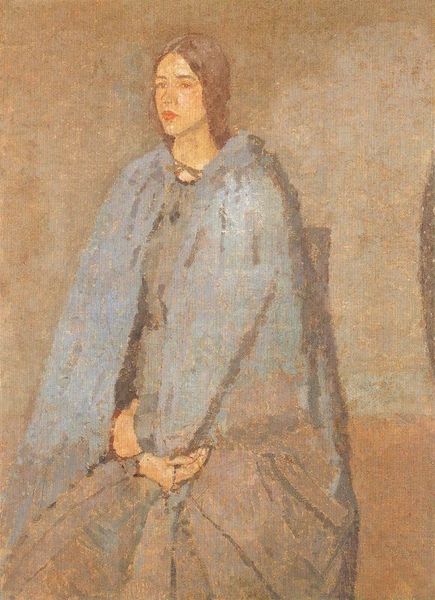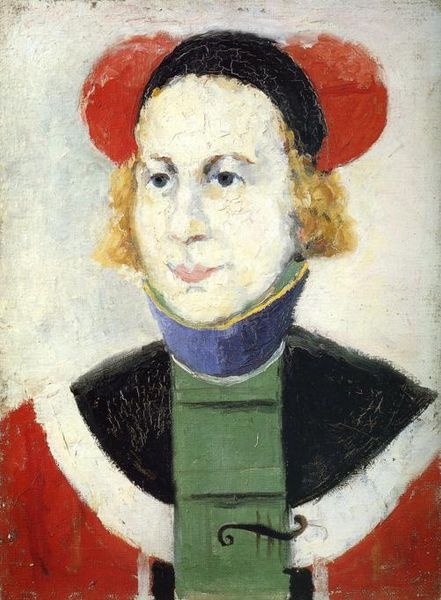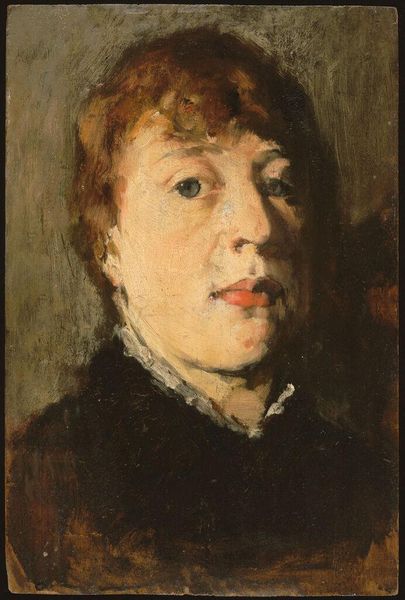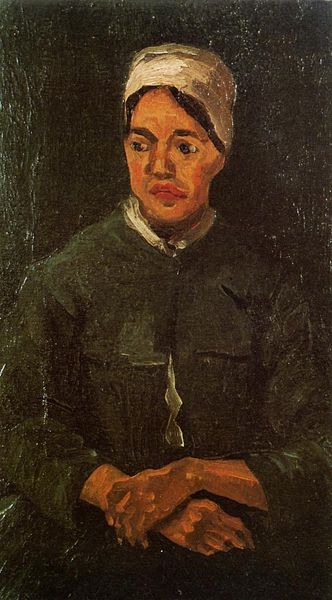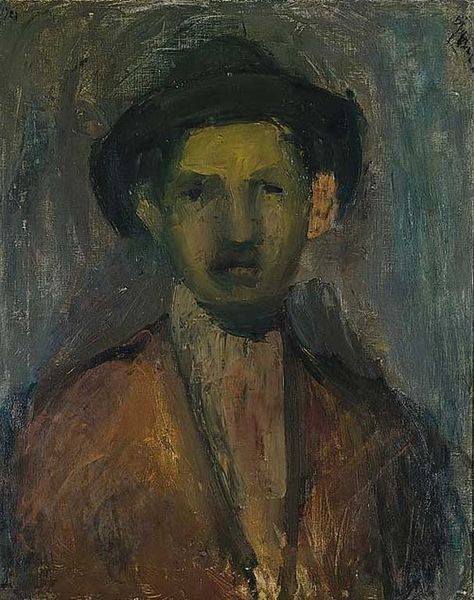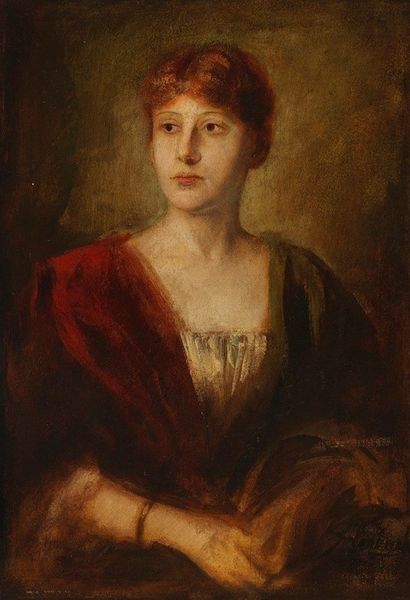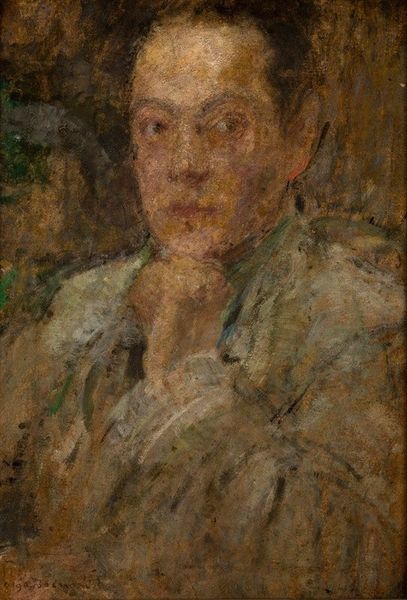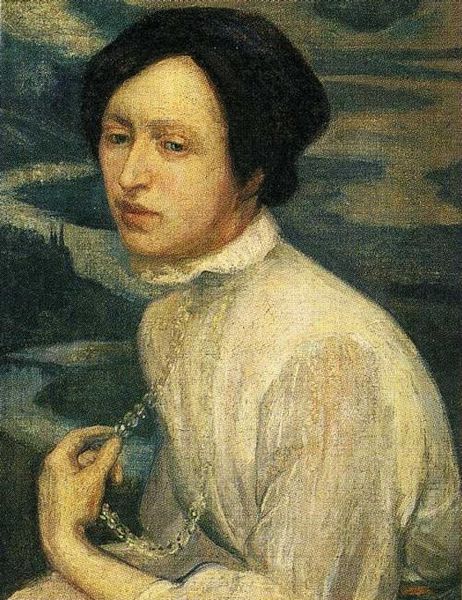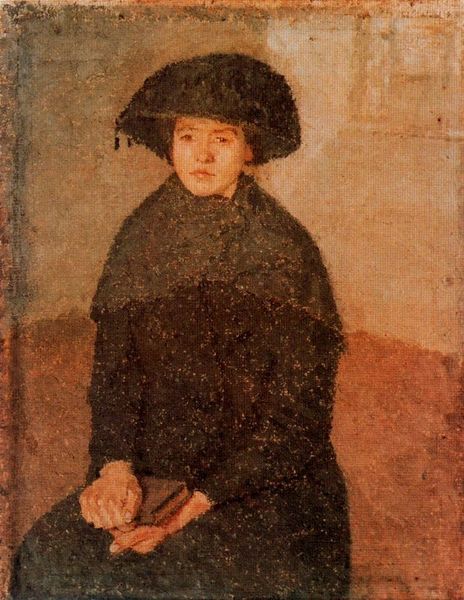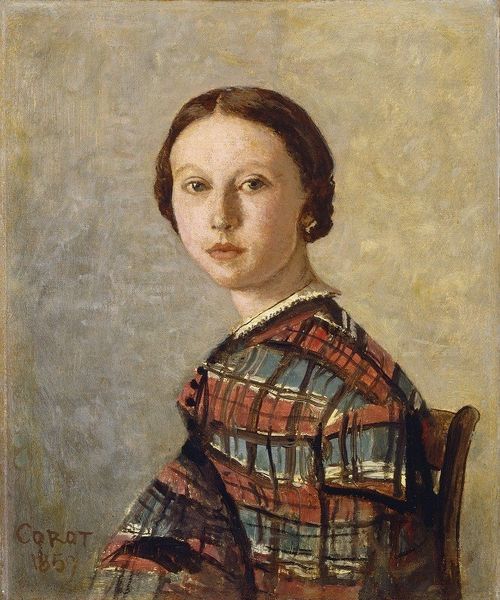
Copyright: Public domain
Curator: This is Amedeo Modigliani's "Portrait of a Woman," painted in 1907. It is now held in a private collection. Editor: She appears almost shrouded in red, doesn’t she? Her face, although realistically rendered, emerges as if from a deeper, obscured space, almost melancholic. Curator: The portrait embodies elements of early modernism with traces of impressionism, particularly in the handling of light and texture. Do you find any resonance in the symbolic portrayal of women at that time? Editor: Absolutely. Early 20th-century portraits often acted as statements on shifting gender roles. This woman’s gaze, while direct, isn’t overtly assertive, is it? Perhaps reflecting the societal push and pull felt by women navigating increased independence. The collar feels oddly stiff too, in opposition to the softness elsewhere. Curator: Indeed. Her features, though softened by the brushwork, invite us to consider the sitter as more than just a face, perhaps symbolizing an emergent awareness or intellectual pursuit beyond conventional expectation. There’s an evocative contrast with that soft impressionistic styling. Editor: It's interesting how Modigliani’s colour choices amplify these notions. The predominance of reds could symbolize passion, even anger perhaps, suppressed, but smouldering beneath the surface, with that subtle counterpoint of what might be a uniform underneath. Curator: In its visual language, this piece certainly participates in the broader visual conversation of female identity unfolding across painting at the turn of the century. Modigliani uses portraiture not only to depict but to imply hidden narratives of personhood. Editor: So, it’s almost as if he is asking us to actively participate in constructing her story rather than passively consuming the image. He doesn’t give us all the clues and asks us to draw connections, perhaps informed by our own experiences, and construct a more complicated view of what might have otherwise appeared. Curator: Ultimately, considering how Modernism often attempted to delve beneath external appearances, this portrait beautifully uses color and gesture to engage us. Editor: And in a way, challenges our assumptions about who this woman could have been, and continues to ask these questions more than a century later.
Comments
No comments
Be the first to comment and join the conversation on the ultimate creative platform.

